
Milo Valley Farm – base and foundation, part 2
Continuing work on the base and foundation. I needed to figure out the earthen ramp before I could determine whether to cut down the base board. It happens that the new foundation is exactly three thicknesses tall of the builders foam. Fantastic!

I cut two full pieces of foam for the front and used one scrap on the top. I marked the door to begin shaving the foam layers into a hill.
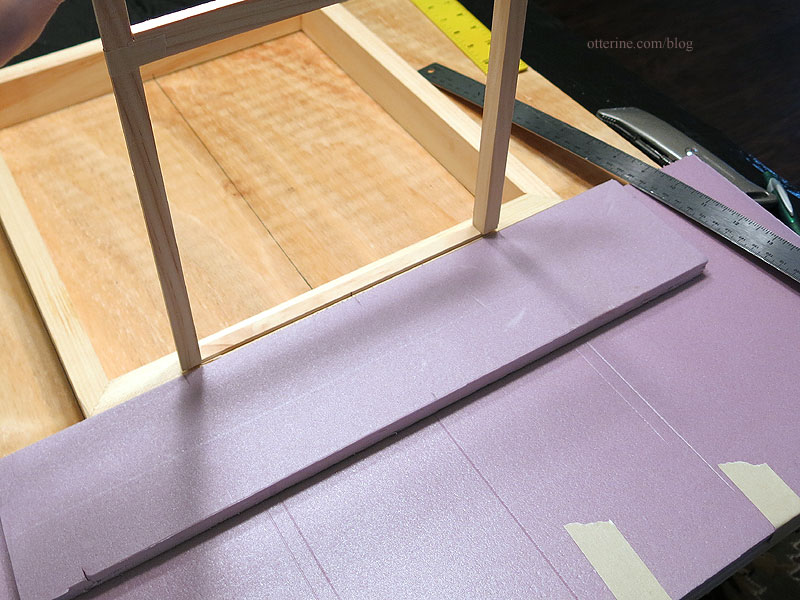
I then did the same for either side of the foundation. This doesn’t have to be exact since other landscaping materials will be applied to this base.
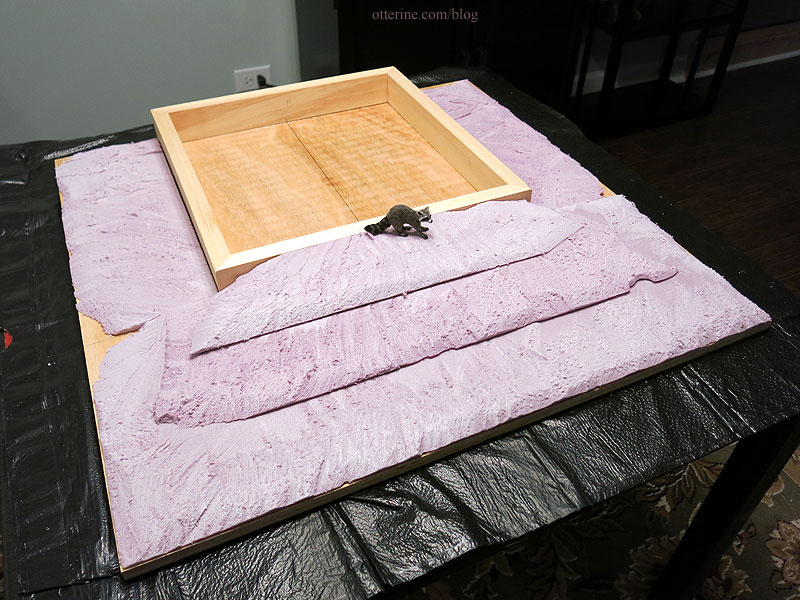
I think the base board will need to be this original size otherwise it won’t look proportionate to the hill and the barn. Roland approves. :D

It was suggested by a Greenleaf member that I prime the foundation wood, so I did that. I then applied a slightly thinner coating of stucco patch and pressed in the aquarium gravel. I set the foundation upside down to make sure the upper edge was flat and uniform.
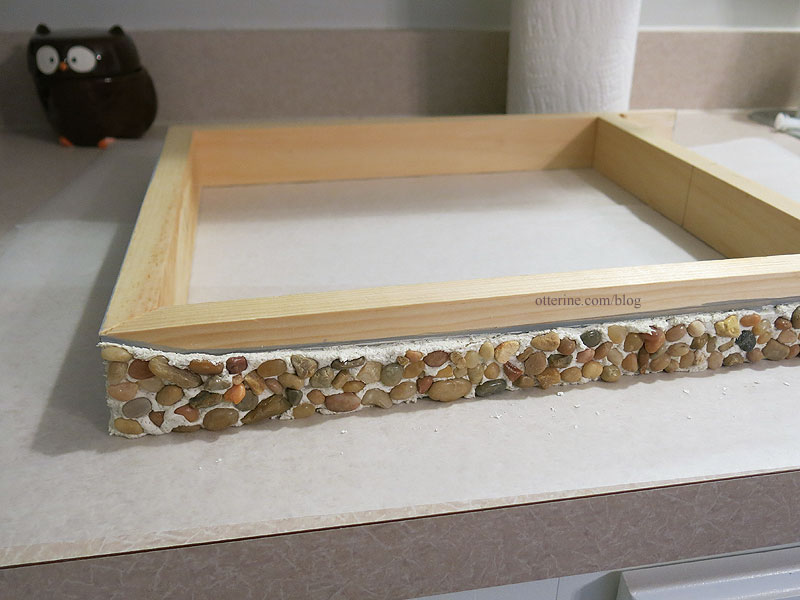
The sample I had made turned very yellow and I wasn’t sure how well the material would stain once dry, so I added a black brown paint wash while the stucco was still wet.
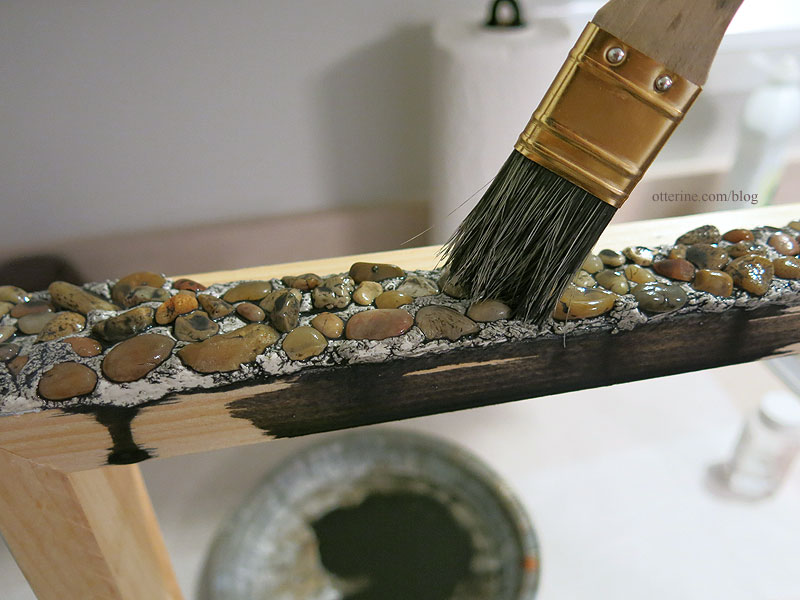
This darkened the grout just enough to start. A few of the stones didn’t want to stay. Might have been a combo of the thinner application and the added water from the paint wash. No worries. I glued the wayward stones back in place and they held.

Once dry, I applied some more stucco material in areas where it seemed too thin. Looks like the walls have been repaired over the years.

To the new grout, I added a brown paint wash to remove the brightness. I can dirty this up more later, as needed.
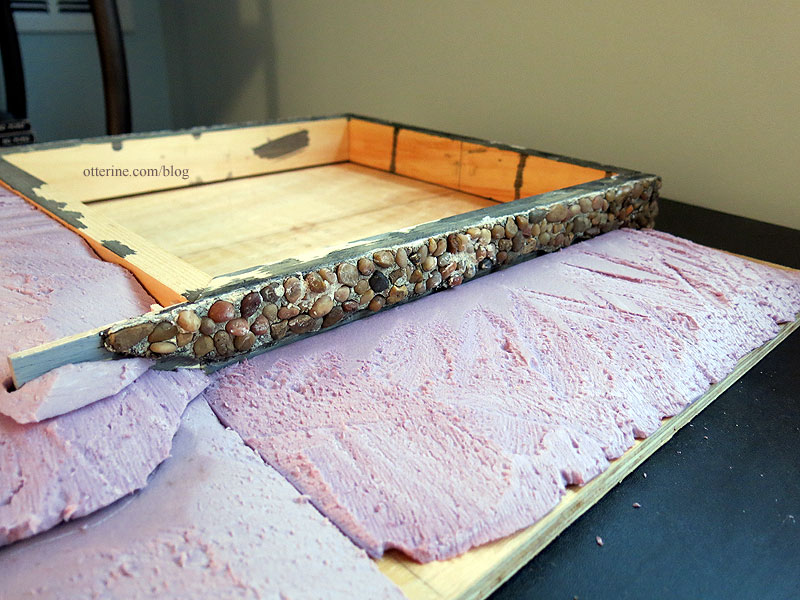
Looks good for scale. :]
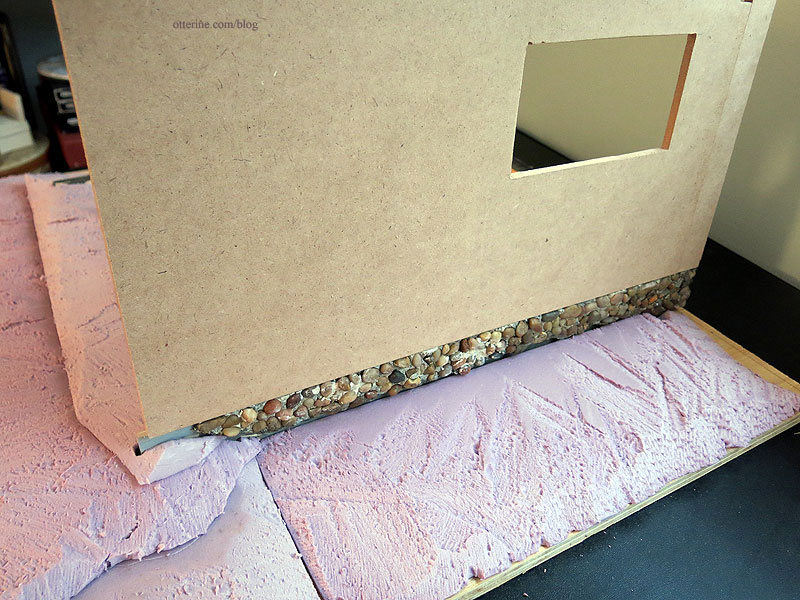
Any gaps or exposed areas of the wood foundation will be addressed in later landscaping.
Categories: Milo Valley Farm
March 24, 2015 | 0 commentsDatsun 240ZG – part 1
I’m going to start this build with a disclaimer: I am an artist, not a modeler. This is a very specific car, so be forewarned that I plan to take several liberties with it strictly for taste. I’ve scoured the internet and saved a bunch of photos of the real deal cars as well as some of the fantastic models done by top-notch modelers. There are some fantastic stock and modified builds out there, and I admire the dedication and thought that went into those projects. I will link to some these during my build. But, my end goal here is to create a barn find. How well-preserved or how dilapidated it ends up, who knows. One thing I do know…it won’t look much like the box art.
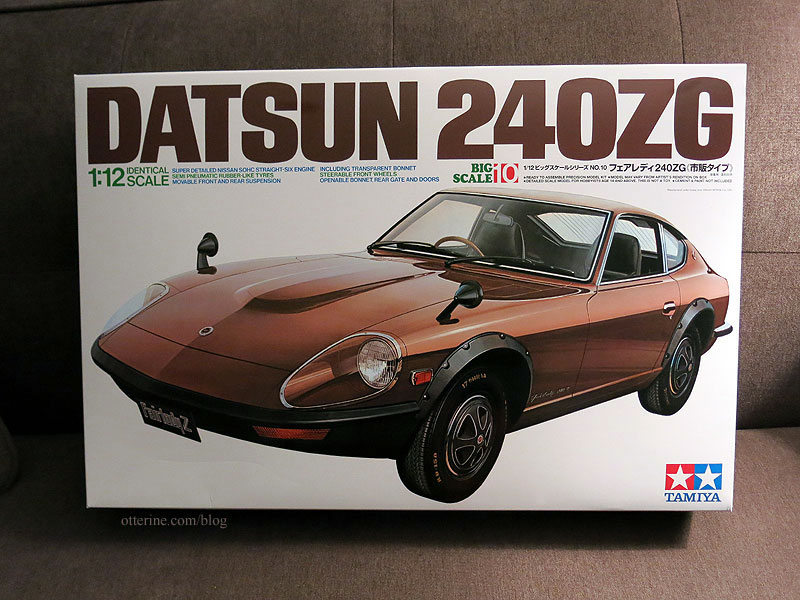
There are 14 sprues of parts with a smattering of other pieces. So far, I’m really impressed with this kit. I’ve not built a car this large, so the details are wonderful. There are also pre-colored light covers and rubberized parts beyond just the tires. I plan to build a complete model, but I’m not going to be a stickler for every last detail. I will be adding a few elements not included in the kit, though. A lot of this car will end up dirty, too, so some details will be lost in age and grime anyway. I will pick my battles. :D
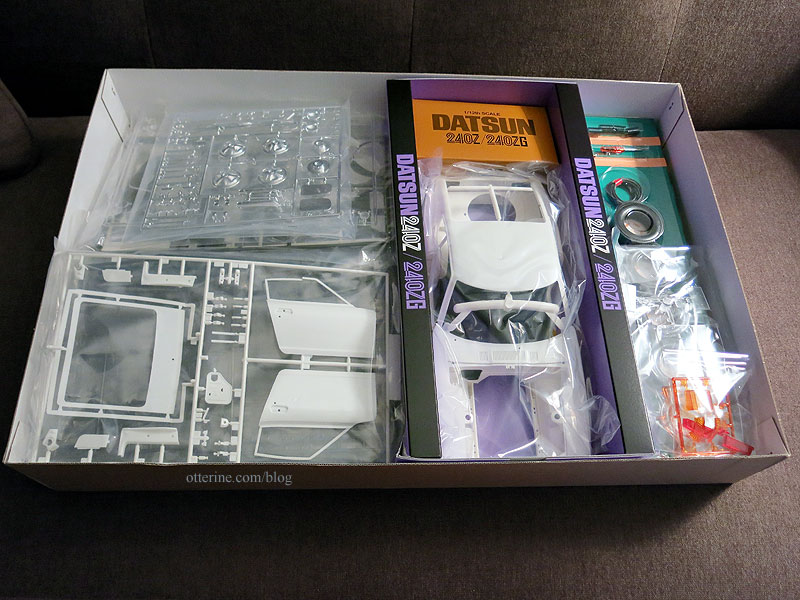
There are 14 pages of detailed instructions in building the model, one of which is the main body color chart.
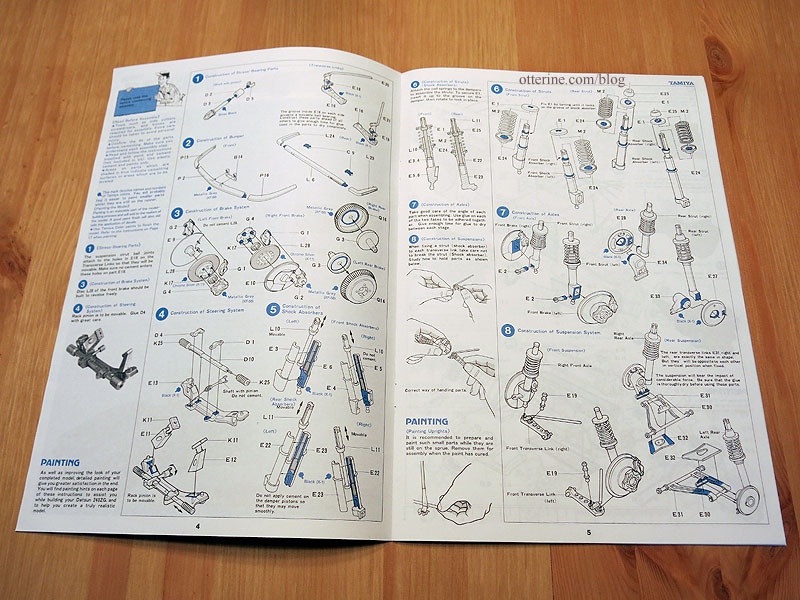
One of the first liberties I am taking is the body color. I bought Testors Fiery Orange. It’s a beautiful red orange metallic. It’s so lovely that I came so close to making this a well-preserved barn find. I’m going to have to spray *something* new in this beautiful color to satisfy that itch. I’m a fan of this color, just so you know.
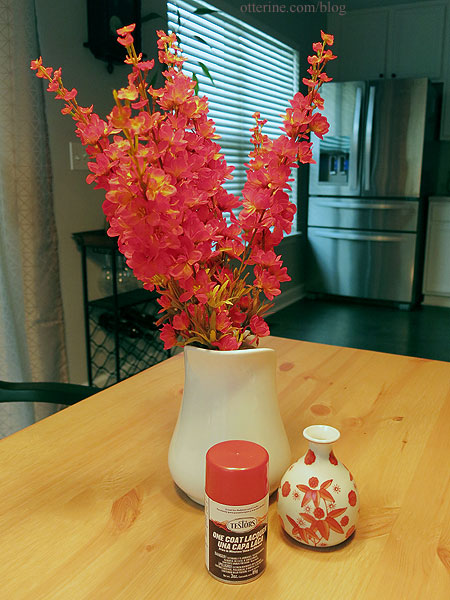
If I were making a showroom new model, I would take more care to study all of the parts before priming. As it is, I primed whole sprues in a color close to their molded color. I like to work with primed plastic because I feel I can work more fluidly with colors and textures on a primed surface.
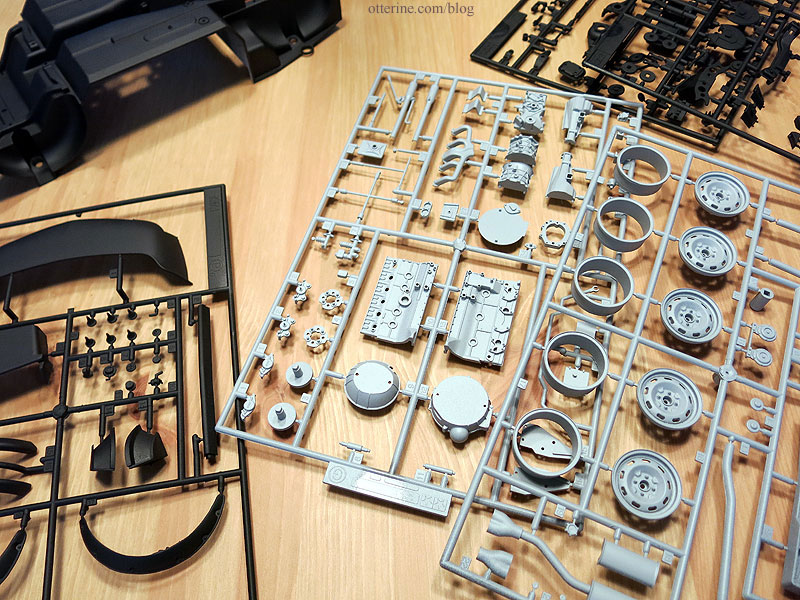
I bought a bunch of Testors bottled paints (plus one Model Masters) and have a few brushes on hand to start. No reason for Testors other than I like their paints and have some already in my stash. I will also be using craft paint acrylics.
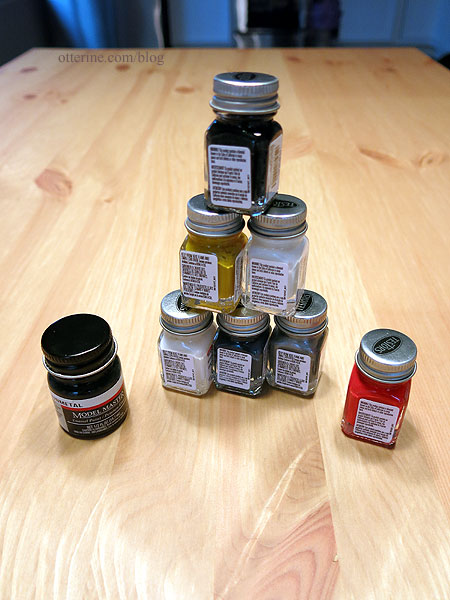
I won’t be detailing every step of the build here on the blog but will post updates along the way. I’ll also make a recap post with links to the various steps as I get further along. So, that’s where I am now…primed sprues, instructions opened to step 1, sample photos ready.
Categories: Milo Valley Farm, Model Cars, Vehicles
March 22, 2015 | 0 commentsMilo Valley Farm – modifying the base kit
Bashing a kit is an organic process for me. I like the trial and error method the best. Many of my ideas have come from happy accidents. :] This is the reason my builds tend to stay in dry fit for so long, often for months, as I figure out processes and solutions to problems.
With the car model now selected, I can work on modifying the overall size of the barn. The 1:12 Datsun will be roughly 14.25″ long according to the info I’ve been able to find online. The interior depth of the kit is roughly 15.25″, which is not a lot of wiggle room. I will add 1″ to the back, shown here in foam core board.

The 2″ gap between the car length and the room inside the barn should be enough. The car will be parked mainly down the middle, but the wide door should allow for slightly offset placement as well. My thought is this is a shed on a larger property. This isn’t the main barn.
When I was young, I lived on a farm (now a built-up suburb), and it had all these old sorts of places. Here is one such example from some photos taken around the time we moved. I’ll have to scour some of my parents’ photo albums for more pics. I’m sure there are a few from when we actually lived there. The main house was the inspiration for The Haunted Heritage.

the main barn with side buildings 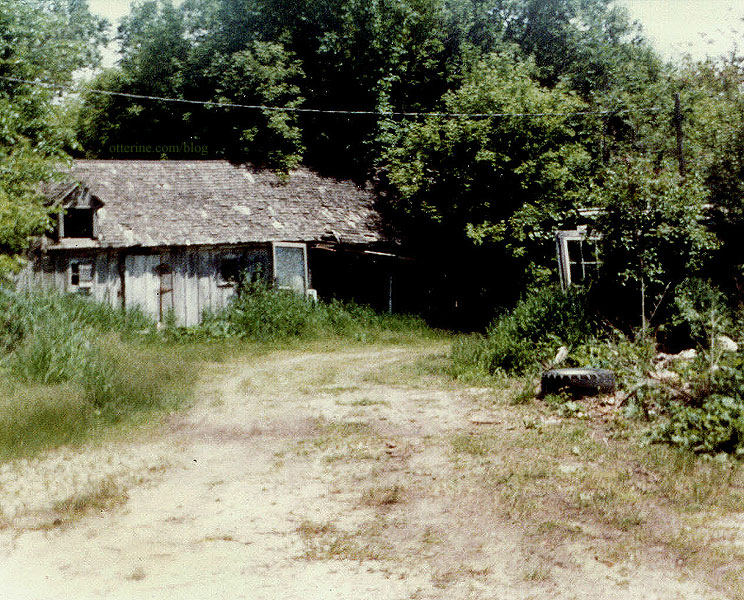
smaller sheds on the property I will also be adding a removable back wall. I made two for Baslow Ranch – one for the barn and one for the room for rent, but I know more now. If I could change one thing about that build it would be to have the removable walls be part of the build and not just propped against the back. For this build, I’m thinking channel molding and a sliding wall. This will add 3/8″ to the exterior measurement beyond the added 1″ for the depth.
The stone texture will add roughly 1/4″ in thickness all the way around the foundation. I’ve already noted to scoot the back of the foundation 1/4″ away from the back edge of the base board to accommodate the stone. I thought it would look odd to have a painted back foundation, so I will carry the stone all the way around the back.
This means I need to add 2.5″ to the front of the foundation. Back to the scrap wood stash….

What about the landscaping foam, you ask? I just marked the outline and cut away the necessary amount. The floor board will hide the foam at the front, no problem. The landscaping will continue to be modified as the build goes on. Besides, I need a rabbit hole for Friedrich now.
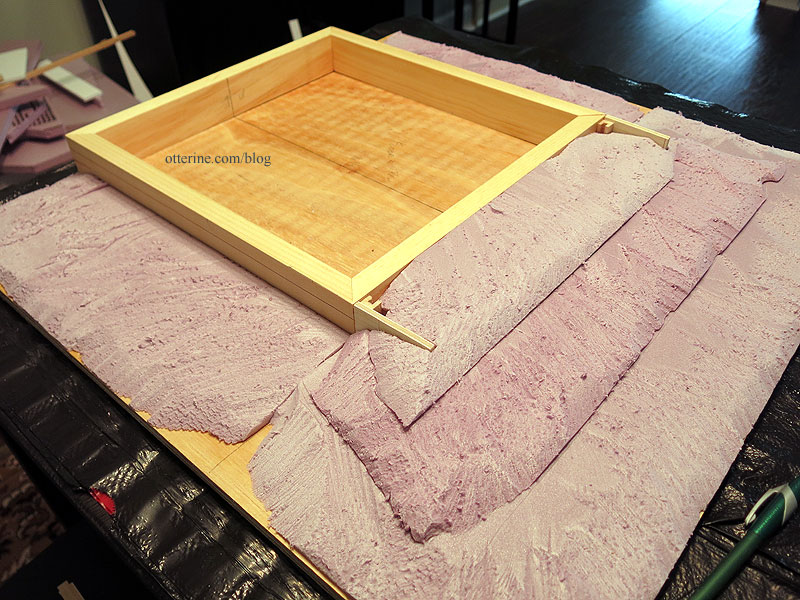
The mdf side walls are 1/4″ thick so they will sit directly above the stone finish except for a tiny bit on the elevated foundation. This isn’t an issue since the side walls will be glued to the floor board and ceiling beams. On the off chance there ever is any sagging of the walls, floor or roof, it will just work in my favor.
For the ease of measuring, I’ve placed the side walls against the base foundation since they are the same thickness as the stone finish. I plan to keep the kit door frame, but the sliding glass door obviously won’t work for a barn. This leaves me with front wall inserts 2 7/16″ wide. I like to use foam core board when making changes instead of just cutting the kit down. Helps me work out an idea without ruining any kit pieces in the process.
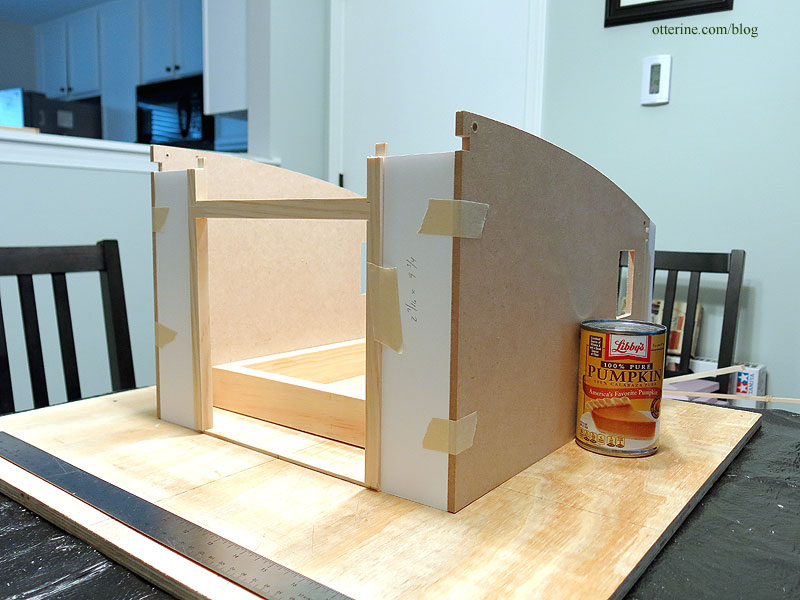
I’d like the use the side windows on the front, which will work here. The windows will require some filler around them, so will cut completely new inserts 9 3/4″ tall to fill the space under the front cross beam.

As an aside, I type out all these measurements in my blog not so much for my audience but for myself. That way I don’t have to write them down anywhere; I can just look them up on the blog.
I cut down the original floor board to fit the new dimensions plus a little additional in length, just in case. I will cut this down after I fine tune the rest of the build. Some of the excess from the floor board was used to make the back extensions for the side walls so that the material matches seamlessly in thickness. I glued this on with wood glue.

Interestingly, the other remaining piece from the floor board ended up being the exact width of the front wall inserts! :O Unfortunately, there was only enough length to cut one from this piece. I cut the other front wall insert from the unused deck board. It’s half the thickness of the other wall/floor materials, so I needed two layers.
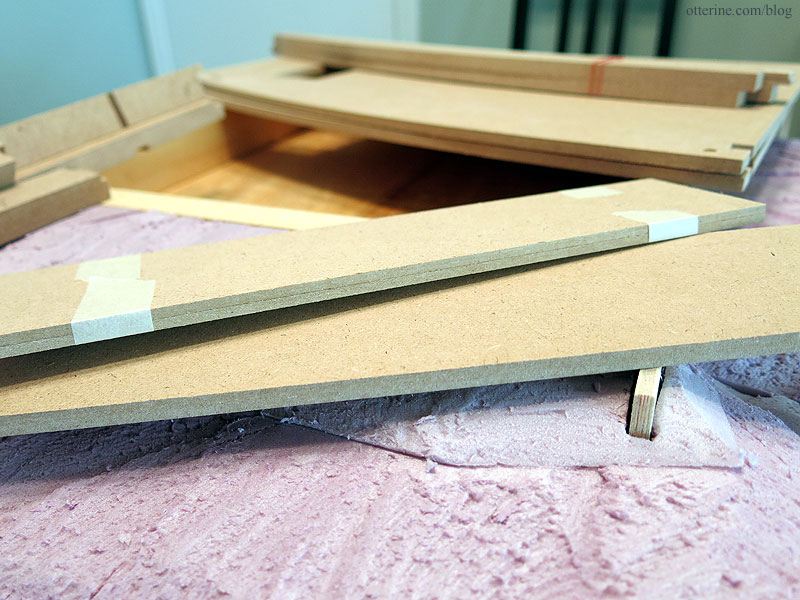
Now for the ceiling support beams. Since I want the door to remain centered, I needed to make my adjustments to the ends. I like the tabs for stability, so I cut those into the shortened ends. I will also need to cut the wood supplemental support beams, but I will wait until I’m further along for that.

Since I used the side windows up front, I will cut larger openings to use the front windows on the sides.
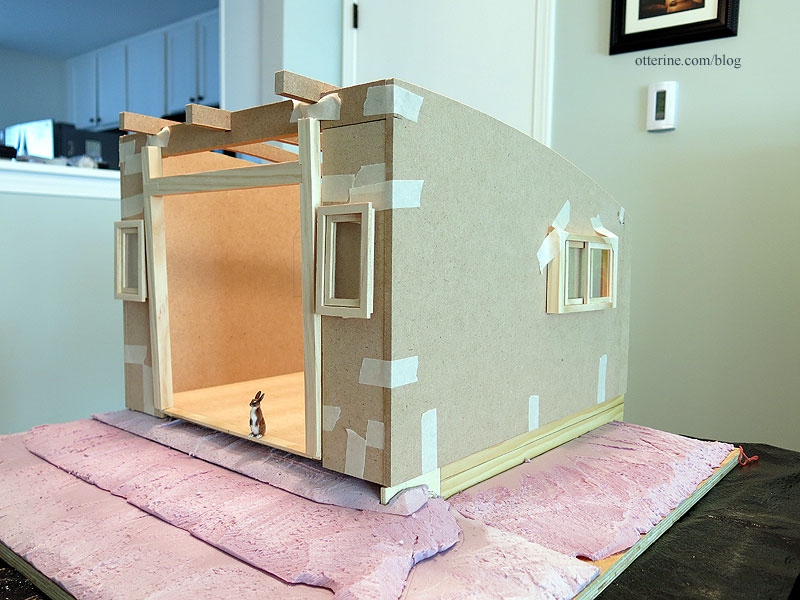
The front-to-back beams still work because I didn’t change the location of the cross beams when I added the 1″ in length to the back.
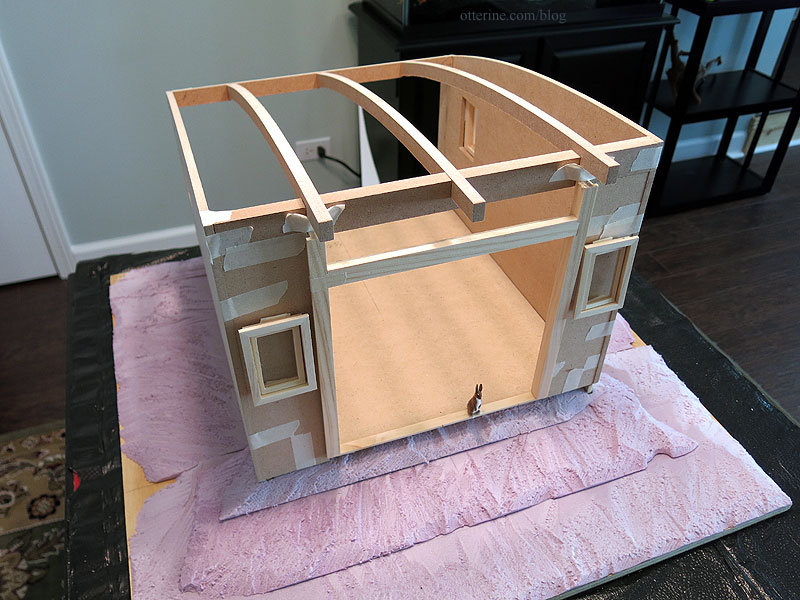
Looks like there is plenty of room in the barn without having a ton of space to fill. I’ll have enough to make it look like forgotten clutter but not so much as to overwhelm. A fine balance.
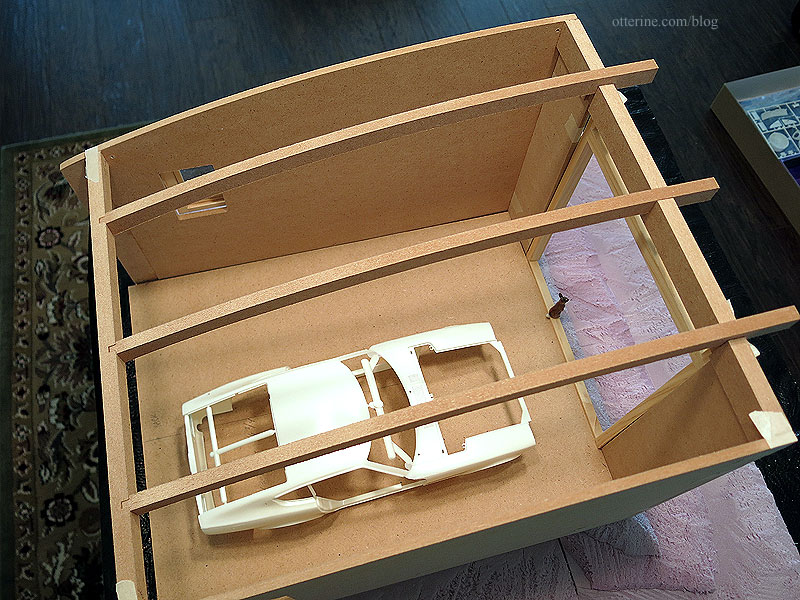
I will have a front outside light, and the best place will be above the door, so I cut an mdf insert to close up the area where the window would have been. I cut down the door frame to fit below the main front cross beam. I also cut the window openings. I centered them from side to side based on adding the side walls (not shown in place here).

I made the front windows the same height as the side windows.

Before I start gluing pieces to the baseboard, I wanted to prep the edges. For a few builds, I’ve left the baseboard unfinished but painted on the edges. For others, I’ve added strip wood. This time around, I’m trying something new: iron-on veneer edging.

It turned out so well I wish I had thought to do this for my previous builds. Ah, well. Now I know.

Categories: Milo Valley Farm
March 21, 2015 | 0 commentsMilo Valley Farm – base and foundation, part 1
I’m starting with a 15/32″ thick plywood base board measuring roughly 24″ square purchased at Home Depot. In general, I use bases that will fit through a standard doorway so I can move the finished builds around my house without issue. Once I get through the first few rounds of dry fitting, I can determine if I will cut the base board down from this original size.
Even though I will be working with a 1:12 scale model car, I’m still going to cut the kit down a little to better fit my idea. Since this kit doesn’t have a solid front wall, making changes to the width has a few more steps but is still pretty easy.
I’d like to have an elevated foundation, so I won’t be using the existing foundation pieces from the kit. I tend to keep unused and/or extra pieces from previous kits, so I dug out the foundation pieces from the Foxhall Conservatory — the kit I used to make the Newport garage. These are 1 3/4″ tall and form a rectangle that measures 13 5/8″ x 14 3/8″.

This foundation is just a bit too short depth wise, but that’s easy to remedy.

I will be using 1/2″ thick builders foam (from Home Depot) to form the main landscaping base. The foam is closer to 9/16″ in actuality so that leaves 1 3/16″ of foundation showing.

I usually use egg carton brick for foundations and stonework can easily be done with the same material, but I wanted to give a real stone foundation a try since I wanted a different sort of look that only 3D pebbles will give. :] So, I bought some aquarium gravel.

They do sell smaller bags but the pebbles were also smaller. I used my handy cutout template to determine that these were a better fit for scale. The template has 2″ and 1″ squares.

I’m a big fan of test samples just in case it’s not the look I wanted or has unforeseen disastrous results. I can also test out further finishes on my sample as I go instead of risking the work already put into a build.
I took a piece of scrap wood and spread some leftover stucco patch (from Home Depot) that was used for Walnut Bay Light in a 3/16″ thick layer.

I did two tests: one with an added brushed-on thin coat of Weldbond and one without. I wanted to see if the glue was needed for secure adhesion.

I pressed the pebbles in place. I used my putty knife to tidy up the edges. I’m already thinking the glue won’t be needed and, if anything, it will make it more difficult to age the grout. I can probably get away with a thinner coat of stucco as well.

The glued portion dried shiny, so I’ll use the stucco patch alone. It’s a solid mass, but a Greenleaf forum member suggested I prime the wood first for longevity, so I will do that on the final go around.
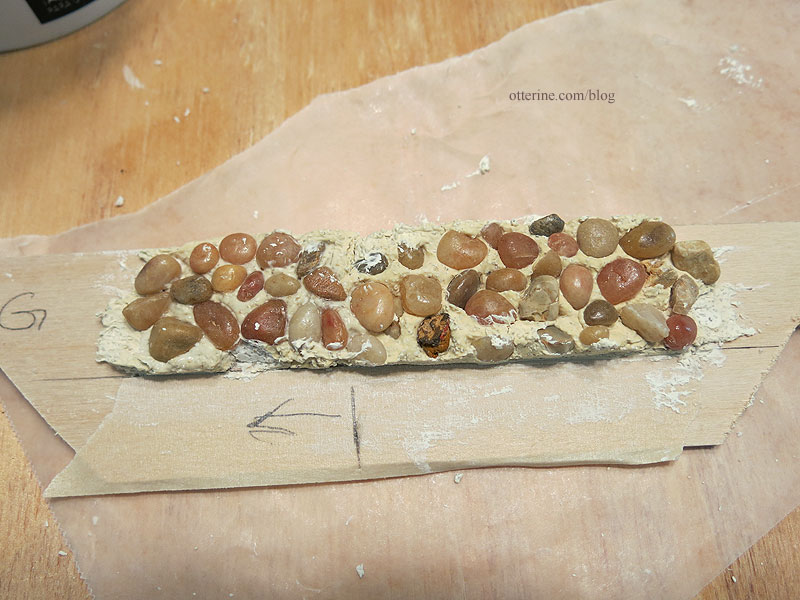
The pebbles are a good size for scale.

Categories: Milo Valley Farm
March 16, 2015 | 0 commentsFriedrich
This is Friedrich, and he will live on Milo Valley Farm, though he appears to be on holiday right now since that build isn’t ready.
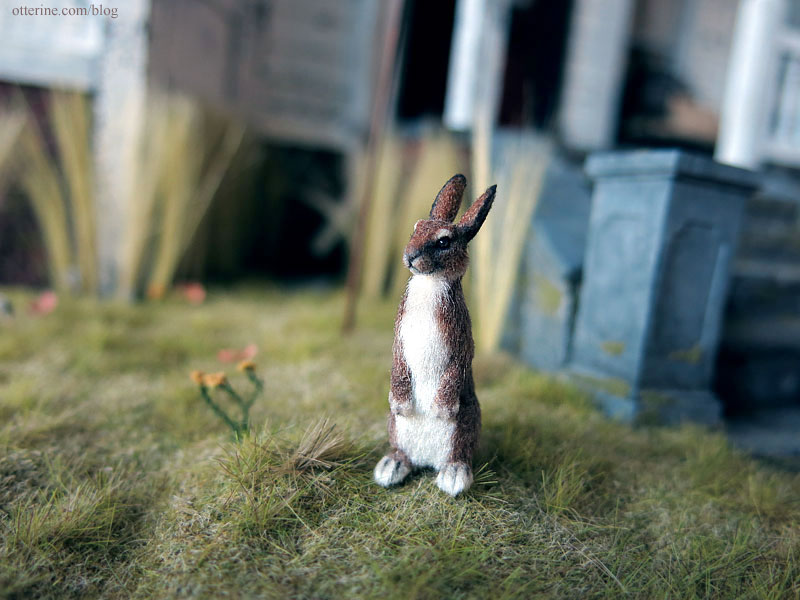
This rabbit is incredibly realistic, made by the talented Michal Gvir. I love his little bear pose. :]

Look at that cute cotton tail!

I love that slight tilt to his head.
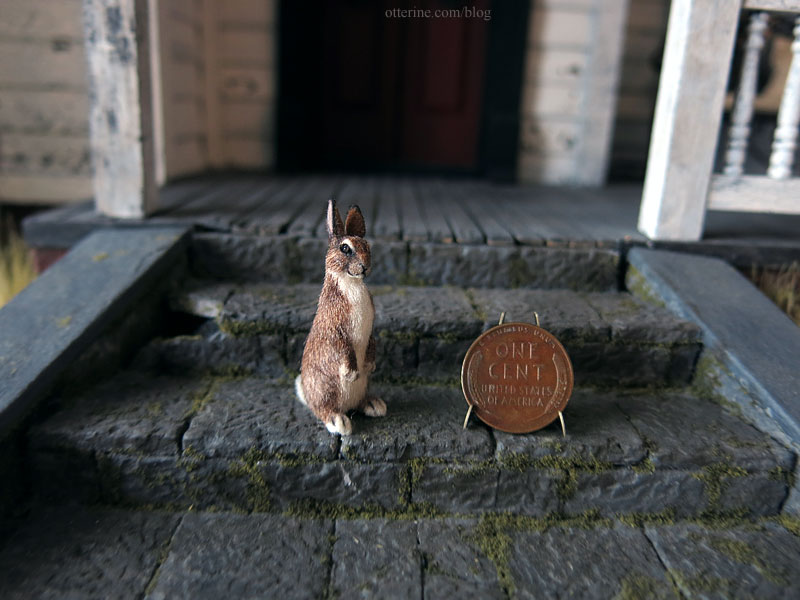
Categories: Animals and birds
March 12, 2015 | 0 comments
NOTE: All content on otterine.com is copyrighted and may not be reproduced in part or in whole. It takes a lot of time and effort to write and photograph for my blog. Please ask permission before reproducing any of my content. Please click for copyright notice and Pinterest use.






































